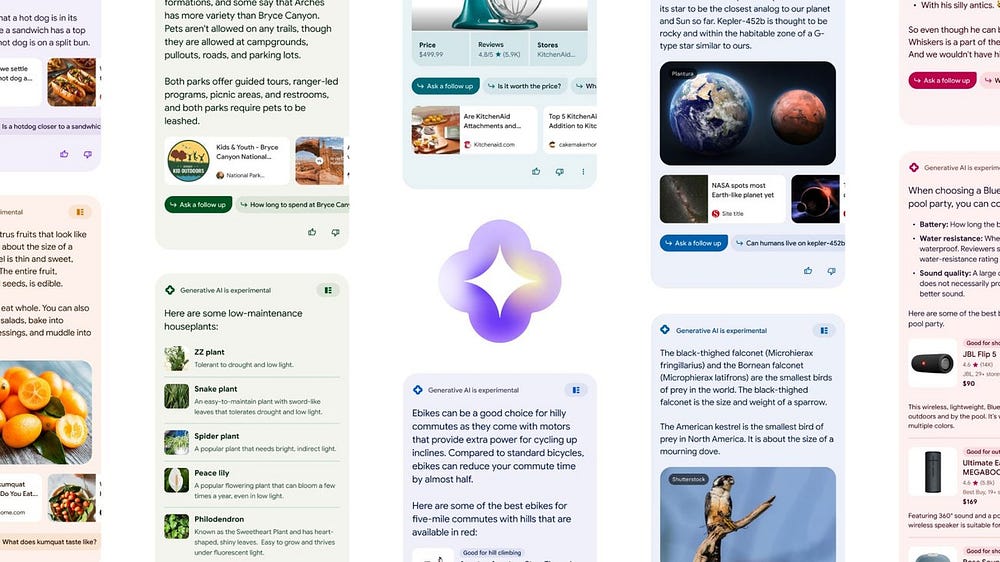Member-only story
Generative search experience: the next step in search engine UX?
Inconvenience is the mother of invention.

We all know that AI is the new hotness, so it was only a matter of time before Google made strides in this new, and lucrative, space. On May 10th at Google’s annual I/O conference, Search Labs was announced. This experimental space–represented by a flask icon nestled between images and Google apps on the Chrome homepage–allows for users to sign up for a beta test of AI-powered features that Google is tinkering with.
One of those experiments is the Generative Search Experience, a kind of answer to ChatGPT represented by a shiny new sparkle icon. GSE pulls from Google’s vast search results to provide more meaningful replies to user’s queries. Instead of just returning links, GSE generates brief paragraphs, bullet pointed lists, and organized presentations on the subject.

This is the “AI snapshot.” Instead of visiting many links, many sites, and combing through comments, Google scrapes search results and compiles together an answer to a question like, “bluetooth speaker for a pool party.” There are, of course, still links below to the usual kind of e-commerce sites trying to sell the user a speaker, but above that is a list of considerations a prospective pool party host should think over before splurging on a speaker.
This feature is obviously helpful, and frankly fascinating when it offers suggestions for extremely detailed queries like, “what’s better for a family with kids under 3 and a dog, bryce canyon or arches national park.” Further follow ups are provided as buttons beneath these results, making a research session all the easier for diligent planners.
But couldn’t we already do this ourselves? The results are the same, just organized a little differently, right?








